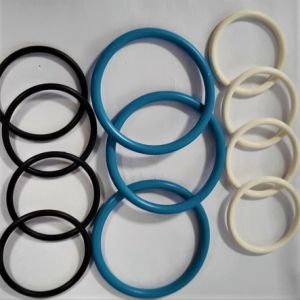One of the world’s hardest wearing fluoroelastomers, Viton™ rubber is used in some of the roughest environments where temperature extremes and chemical interactions are frequent. It is a popular choice for many specialist applications due to its high performance and superb durability.
What is Viton™, and how might it benefit your business? may be a question you have if you’re looking for an incredibly adaptable material for challenging applications. This blog post gives thorough guidance for you to make an informed decision.
A Description of Viton™
The most widely used grade of Viton™ is A grade, which has a fluorine content of 66% and is used most frequently in o rings and seals. Better fluid resistance is provided by Viton™ B, and resistance to fuel permeation is specifically strong in Viton™ F. High performance grades are also offered, but if you’re unsure what you need, talk to your supplier.
Reasons To Use Viton™
The cost of a Viton O-rings will generally be much more than that of a comparable nitrile component. This is since it only fills the void left by other products. Viton™ outperforms nitrile in terms of operational temperature range, resistance to deterioration brought on by weather and ozone exposure, and chemical resistance.
For the heaviest duty, go for a Viton™ O-ring since it will last longer. As a result, you can benefit from longer service intervals, which will lower your maintenance costs and provide you with a better seal. Your investment in a Viton™ product will pay off through greater operational efficiency because there is far less chance of unplanned downtime caused by O-ring failure.
What Uses Does Viton™ Have?
When there are difficult conditions to deal with, Viton™ seals are the best option. For instance:
- High temperatures: Viton O-rings can tolerate conditions as hot as 210°C.
- Chemicals: Viton™ is resistant to a variety of chemicals, including oils, acids, silicone fluids, gases, halogenated and aromatic hydrocarbons, as well as silicone gases.
- Environmental challenges: Despite oxidation, UV exposure, weather, ozone, fungus, and mold, Viton™ can retain a seal.
What is Viton™ useful for, then? Well, the chemical, automotive, and appliance processing sectors all often use Viton™. Additionally, Viton™ products are supplied to the aerospace, oil and gas exploration, petroleum refining, and transportation businesses.
A Description Of Viton™ Seal
Simply said, a Viton™ seal is one made from Viton™. These gaskets or seals are frequently used to stop leaks from pumps, valves, and other devices. The most popular kind of seals are Viton O-rings which are offered in a range of sizes and profiles.
The Nutshell
O-rings are made from a variety of Viton™ materials, including Viton™ A, Viton™ B, and Viton™ F. The basic distinction between Viton™ A, Viton™ B, and Viton™ F is the fluorine concentration, with Viton™ A having 66%, Viton™ B having 68%, and Viton™ F having 70%. The most often used variant is Viton™ A, while Viton™ B and Viton™ F are also used when an application requires. In a nutshell Viton™ is the most common material used to make O-rings, and for good reason.

